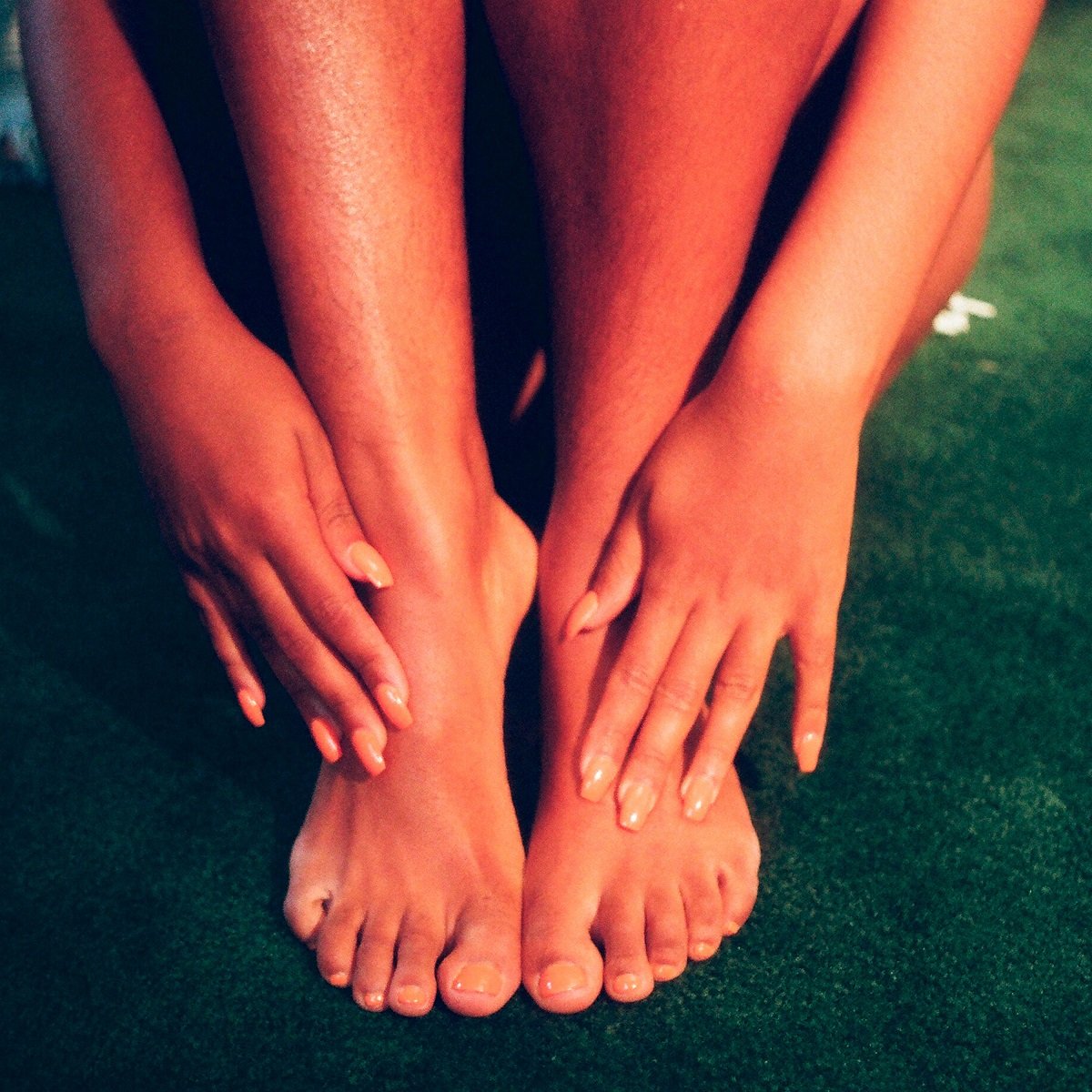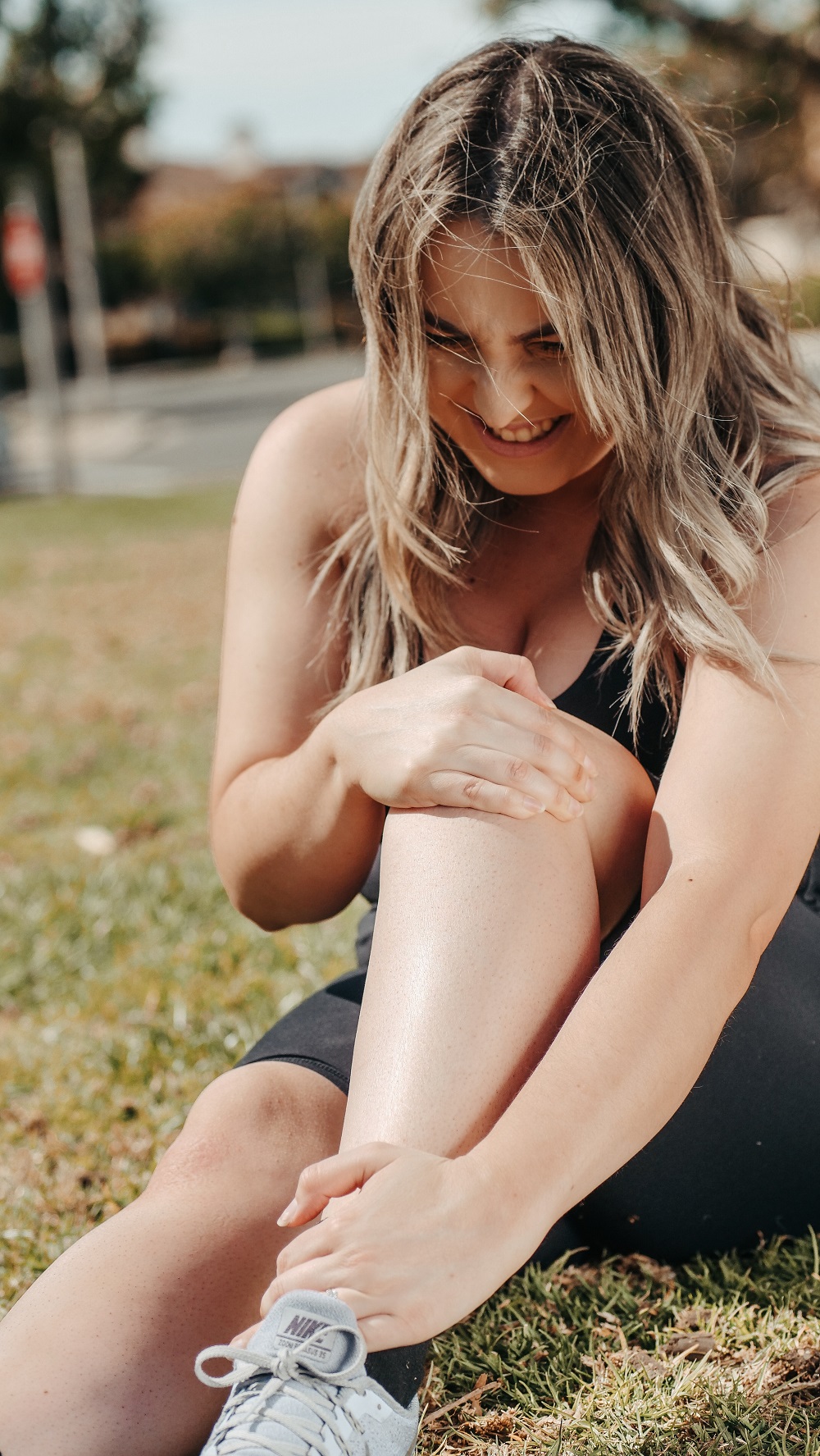
If you’re experiencing inner ankle pain or another foot-related ailment, you might have come across the term “pronation.” This condition is relatively common and can lead to a number of other issues with the feet, legs, and even the back. The good news is that proper shoes can be immensely beneficial in offering relief from discomfort and potentially correcting abnormal pronation.
But what is foot pronation, exactly, and how do you know if you have it? The podiatry nerds at Vionic are here to break it down for you. Read on for insight into the different types of foot pronation and various problems it can cause, along with certain remedies including Vionic orthotics.
What Is Pronation?
Pronation is the natural landing movement your foot makes with each stride.¹ The action distributes impact from the ground or floor you walk on while absorbing shock from your body weight. Pronation itself simply refers to this landing motion and doesn’t imply anything is wrong—everyone pronates when they walk.
What Is Neutral Pronation?
Neutral pronation implies a healthy, natural gait cycle. A person with a neutral stride rolls their foot only slightly inward to absorb shock while keeping their legs and ankles aligned.
It also helps them prepare for the next step and push off from the ground without putting unnecessary pressure on any one area of the foot or wasting energy while they walk. Generally speaking, neutral pronation makes an individual less inclined to experience foot-related discomforts and common injuries.
When people talk about foot pronation issues, they’re usually referring to overpronation or underpronation. Read on for details and insights about each condition.
What Is Overpronation?
Overpronation is when the bottom of the foot splays fully out as it touches the ground.² The ankles typically rotate inward and downward, an angle that draws the underfoot fully down. Those with naturally low arches and flat feet are more likely to overpronate, but virtually anyone can experience the issue.
This foot condition can cause other biomechanical issues, as it encourages the hips and knees to rotate inward as well. In some cases, overpronation pulls on the soft tissues throughout the legs, resulting in pain over time. The added pressure in the feet can create uncomfortable friction too.
Read our blog, How to Treat Inside Ankle Pain, for pain management tips and remedies.
What Is Underpronation?
The difference between overpronation vs underpronation is that underpronation is when the foot rolls outward with each stride. Sometimes called supination, it usually means the bottom of the foot splays (spread out) less than it should when in contact with the ground, therefore ineffectively absorbing shock.
When combined with inadequate shock absorption, this added weight on the outer sides of the feet can lead to a range of uncomfortable ailments and put a person at a higher risk for a foot problem or injury. People with naturally high arches are more likely to underpronate. However, almost anyone can suffer from supination, including those with flat feet.

Foot Pronation Problems
As mentioned above, overpronation and underpronation can lead to a number of discomforts and even some medical issues. Some of the most notable problems relating to foot pronation include shin splints, plantar fasciitis, heel pain, bunions, Achilles tendonitis, stress fractures, iliotibial band syndrome, patellofemoral pain syndrome, lower back pain, and a heightened risk of injury. Here’s what you should know.
Shin Splints
Known medically as medial tibial stress syndrome, shin splints typically occur in athletes when changing their training regime.³ It can also happen to recreational exercisers when trying out a new workout or increasing the intensity of a routine.
When the body isn’t used to a particular movement or is stressed from an increase in activity, the overworked ligaments in the shins can become inflamed. Shin splints are usually temporary, but they can be extremely painful and sometimes debilitating.
Plantar Fasciitis and Heel Pain
Plantar fasciitis is among the most common culprits of heel pain. It occurs when the plantar fascia (the thick band of tissue connecting the toes to the heel bone) becomes inflamed. The condition is usually caused by repeated stress on the foot, such as an overuse injury or overpronation.
Bunions
Bunions are bony protrusions at the lower joints of the big toes.⁴ What causes bunions? They develop over time when bones in the front of the foot shift out of place, pulling the tip of the big toe toward the smaller ones and forcing the lower joint to jut out. Check out our blog for more information on can bunions be reversed and some of the best sandals for bunions available at Vionic.
Achilles Tendonitis
Achilles tendinitis is characterized by inflammation of the Achilles tendon (the band of tissue connecting the calf to the heel bone).⁵ This overuse injury can be very painful and potentially make it difficult to walk. Achilles tendonitis can take months to heal, and in severe cases, may require surgery.
Stress Fractures
Stress fractures are characterized by small cracks in the bone and are usually a result of overuse.⁶ The injury typically appears in weight-bearing bones in the feet and ankles. Since people who underpronate and overpronate put extra pressure on different areas of their feet, they may be at risk for developing a stress fracture.
Iliotibial Band Syndrome
Iliotibial band syndrome is an inflammation of the ligaments located in the outer knee area and hips.⁷ This overuse injury occurs when connective tissues between the pelvic bone and shin bone tighten in such a way that they rub against the thigh bone. It can be incredibly painful and typically calls for medical attention, whether it’s corticosteroid injections, physical therapy, or surgery.
Patellofemoral Pain Syndrome
Patellofemoral pain syndrome is characterized by pain in the kneecap (patella).⁸ Also known as runner’s knee, the condition is common among runners and other athletes. The repetitive inward or outward rolling motion of foot pronation issues can pull on the knee, and over time, potentially cause patellofemoral pain syndrome.
Lower Back Pain
Lower back pain is also common among people who overpronate and underpronation. The continual stress of the inward or outward rotation can pull on ligaments throughout the legs. This discomfort sometimes causes people to overcompensate by putting weight or strain on other body parts, including their lower back.
Heightened Risk of Injury
Foot pronation issues can put individuals at a higher risk of injuries. In addition to overuse injuries like Achilles tendonitis and stress fractures, they often have a greater chance of tripping, falling, and losing their balance.
The Best Supportive Shoes and Orthotics for Women and Men
Inadequate footwear can cause a person to overpronate or underpronate. Without proper support, the body tends to overcorrect by putting weight on different areas of the foot. Here at Vionic, we’re committed to helping people find shoes that not only make them look good but also feel their best.
Our podiatrist-designed footwear features built-in orthotic inserts to offer relief from various foot conditions, including pronation problems. Every pair is biomechanically engineered with Vio-Motion Support technology to hug your arches, absorb shock, and encourage a natural stride from the ground up. We offer a range of styles for men and women, as well as comfortable, supportive orthotic shoe inserts you can put in virtually any shoe. For more information on how to correct overpronation and further sore feet causes, visit Vionic Shoes today!
External sources:
- Jordi Lippe-McGraw. “The Beginner’s Guide to Pronation”. Healthline. Updated on March 8, 2019, https://www.healthline.com/health/beginners-guide-to-pronation
- Jenna Fletcher. “What is overpronation?”. Medical News Today. December 22, 2017, https://www.medicalnewstoday.com/articles/320383#overview
- “Shin splints”. Mayo Clinic. https://www.mayoclinic.org/diseases-conditions/shin-splints/symptoms-causes/syc-20354105
- “Bunions”. Mayo Clinic. https://www.mayoclinic.org/diseases-conditions/bunions/symptoms-causes/syc-20354799
- “Achilles tendinitis”. Mayo Clinic. https://www.mayoclinic.org/diseases-conditions/achilles-tendinitis/symptoms-causes/syc-20369020
- “Stress fractures”. Mayo Clinic. https://www.mayoclinic.org/diseases-conditions/stress-fractures/symptoms-causes/syc-20354057
- “Iliotibial band syndrome”. The BMJ. March 21, 2019, https://www.bmj.com/content/364/bmj.l980
- “Patellofemoral pain syndrome”. Mayo Clinic. https://www.mayoclinic.org/diseases-conditions/patellofemoral-pain-syndrome/symptoms-causes/syc-20350792
- James McIntosh. “What is causing this pain in my back?“. Medical News Today. February 23, 2017, https://www.medicalnewstoday.com/articles/172943


Cantrice
Can you make some work shoes in brown or grey like the Mina style.
Vionic Shoes
We do! You can always refine your search online by shoe color, size and width at VionicShoes.com